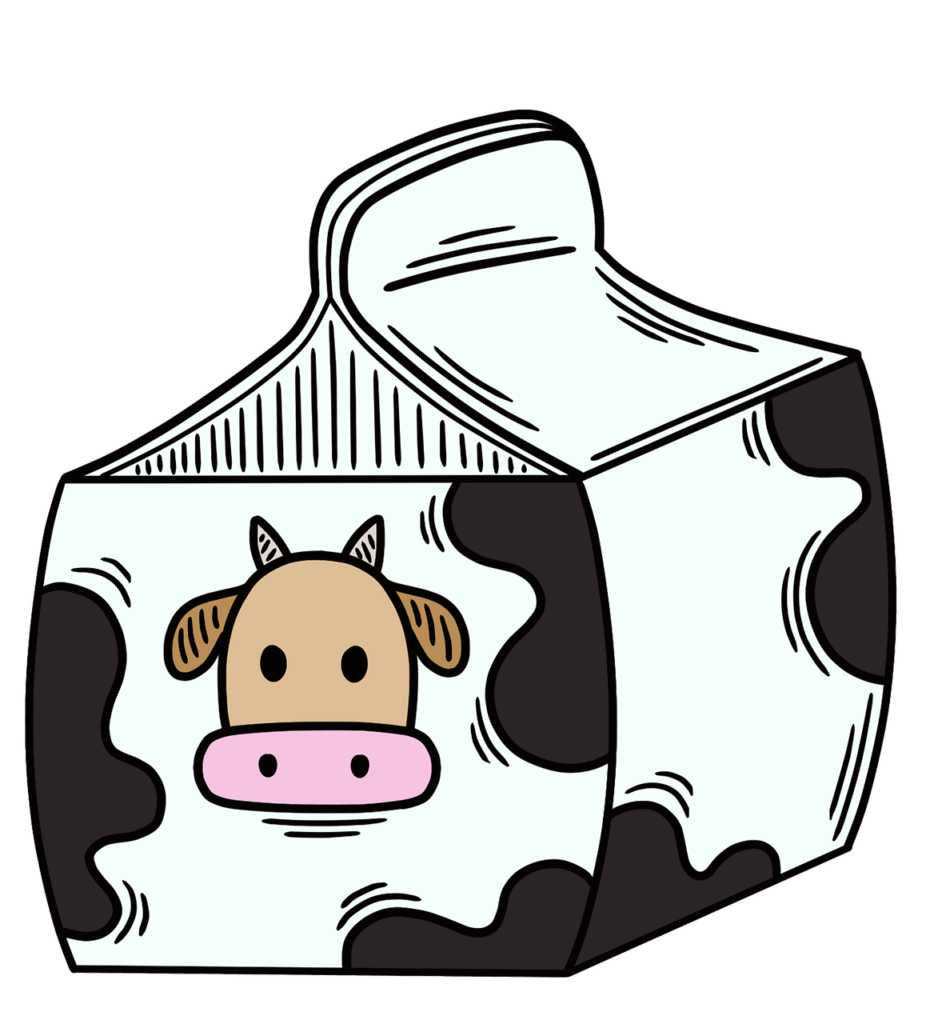In an era where health information is abundant yet often conflicting, the guidance of immunologists stands as a beacon for families grappling with the complexities of food allergies. Particularly concerning milk allergy, which remains a significant public health concern with potentially severe consequences, the scientific landscape has evolved dramatically. What was once common wisdom – strict avoidance or delayed introduction of allergens – is now being rigorously re-evaluated, leading to new, evidence-based recommendations that challenge long-held beliefs.
Food allergies, including those to dairy, impose a substantial burden, not only medically but also psychologically and economically. With a significant portion of the population affected, and severe reactions like anaphylaxis a constant concern, primary prevention has rightfully emerged as a crucial public health objective. This shift emphasizes proactive strategies rather than reactive management, aiming to build robust immune tolerance from an early age.
This article, guided by the latest insights from immunologists and supported by robust research, delves into ten key areas where conventional approaches are being refined or strictly limited. We aim to shed light on how medical professionals are now advising against certain practices to foster immune health and effectively prevent milk and other food allergies, particularly in the delicate stages of pregnancy, lactation, and infancy.

1. **Unnecessary Allergen Restriction During Pregnancy**For many years, the idea that pregnant women should restrict common food allergens, including dairy, was a widespread notion, driven by the hope of preventing allergies in their unborn children. However, this advice has undergone a significant overhaul based on scientific scrutiny. Immunologists now strictly limit recommending such restrictive diets during pregnancy, as evidence has repeatedly shown no benefit and, in fact, potential risks.
Systematic reviews and randomized trials, notably a Cochrane review from 2012, have conclusively found no benefit from restricting common food allergens among pregnant women. This includes dairy, egg, wheat, and peanut. The findings are clear: these dietary interventions during pregnancy are not only ineffective in preventing allergies but may also compromise maternal and fetal health by potentially leading to nutritional deficiencies for both the mother and the developing baby. Instead, international advisory bodies like the European Academy of Allergy and Clinical Immunology (EAACI) and the American Academy of Pediatrics (AAP) now advocate for dietary diversity during pregnancy.
Enhanced dietary diversity, particularly a higher intake of fruits and vegetables, has been associated with a reduced risk of allergic outcomes. For instance, higher maternal intake of green and yellow vegetables and citrus fruit was associated with reduced infantile eczema. While some observational studies suggested maternal fish consumption during pregnancy might be protective, a systematic review in 2017 failed to validate this association. Conversely, higher maternal intake of dairy products themselves may even reduce the risk of atopic dermatitis and asthma, further underscoring the lack of basis for restriction.
2. **Unjustified Allergen Avoidance During Lactation**Just as with pregnancy, the guidance regarding maternal diets during lactation has seen a significant shift. The belief that mothers could inadvertently sensitize their children to certain foods, including dairy, through breast milk led to recommendations for restrictive diets while breastfeeding. However, current immunological understanding and evidence have led to a strict limitation on this practice, advising against maternal avoidance diets as a general allergy prevention strategy.
Studies exploring the association between maternal avoidance diets and allergy in their infants have yielded contradictory results. Consequently, international recommendations now state that maternal avoidance of highly allergenic food is not recommended as an allergy prevention strategy. This general recommendation emphasizes that, for the vast majority of breastfeeding mothers, there is no need to proactively cut out dairy or other common allergens from their diet in an attempt to prevent allergies in their infant.
It is crucial to note that this recommendation does not apply universally. For infants who already show clear signs of allergic disease from an early age, a healthcare professional may recommend that maternal avoidance of certain foods, including dairy, form part of their management plan. In these specific cases, under medical guidance, temporary dietary adjustments by the lactating mother may be warranted to alleviate the infant’s symptoms, highlighting the importance of individualized care rather than blanket restrictions.

3. **Reliance on Inaccurate Diagnostic Tests for Milk Allergy**When a food causes an allergic reaction, pinpointing the exact culprit can be challenging. To diagnose a milk allergy, healthcare professionals employ a combination of approaches. However, immunologists strictly limit sole reliance on initial skin tests or blood tests due to their inherent limitations and incomplete accuracy, emphasizing the need for a comprehensive diagnostic process.
One common diagnostic tool is the skin test, where the skin is ed and exposed to small amounts of milk proteins. If an allergy is present, a raised bump (hive) may form. While useful, the context clearly states, “Keep in mind that this type of test isn’t completely accurate for detecting milk allergy.” Similarly, a blood test can measure IgE antibodies in response to milk. Yet, this test also “isn’t completely accurate in identifying milk allergy.” These tests indicate sensitization, not necessarily clinical allergy.
Therefore, if examination and initial test results cannot definitively confirm a milk allergy, a healthcare professional, often an allergist, might administer an oral challenge. In this supervised test, increasing amounts of foods that may or may not contain milk are given to observe for a reaction. This method is considered the gold standard for diagnosis precisely because immunologists understand and strictly limit the diagnostic certainty derived from skin and blood tests alone, insisting on the oral challenge for definitive confirmation, particularly when managing serious reactions.

4. **Delayed Introduction of Allergenic Foods in Infants**For many years, parents were advised to delay the introduction of common allergenic foods, including those containing cow’s milk protein, into their infant’s diet, hoping to prevent allergies. This advice has dramatically reversed, and immunologists now strictly limit delaying the introduction of highly allergenic foods beyond an optimal window, especially for infants deemed at high risk for developing allergies.
Current evidence strongly suggests that delaying solids beyond 4 months of age does not confer additional allergy protective benefits. In fact, the converse appears to be true: delayed introduction may increase the risk of allergy development. This paradigm shift is supported by a growing body of evidence indicating that excessive avoidance of natural exposure to allergens can impair immunological tolerance, the very mechanism that helps the body learn to accept these foods.
For infants with a first-degree relative with atopy or those with atopic dermatitis (eczema), who are considered high-risk, delaying the introduction of highly allergenic groups may increase allergy risk. Conversely, early introduction, specifically between 4 and 6 months of age, may be protective against the development of allergy to that specific dietary allergen. This includes foods like egg, peanut, tree nuts, and cow’s milk. International bodies like EAACI and AAP now recommend introducing complementary foods between 4-6 months, aligning with local practices and infant needs, irrespective of atopic heredity.

5. **Intermittent Exposure to Cow’s Milk Formula for Prevention**The way cow’s milk is introduced in infancy has also come under the scrutiny of immunologists, particularly for allergy prevention. While breastfeeding is highly beneficial, when formula supplementation is necessary, the pattern of exposure matters significantly. Immunologists now strictly limit intermittent or irregular exposure to cow’s milk formula (CMF) in early infancy, instead advocating for consistent and regular exposure once CMF is introduced, to help build tolerance.
New insights into the prevention of IgE-mediated cow’s milk allergy (CMA) highlight the importance of consistent exposure. Observational studies have reported an increased risk for developing CMA with delayed or irregular ingestion of cow’s milk early in life. This suggests that the immune system benefits from regular, predictable exposure to build tolerance, rather than sporadic encounters.
The SPADE (Strategy for Prevention of milk Allergy by Daily ingestion of infant formula in Early infancy) study found that ingesting a minimum of 10 mL of CMF at least once every day at age 1–2 months significantly reduced CMA at age 6 months compared with avoiding CMF supplementation. This study underscored that CMF supplementation did not necessarily compete with breastfeeding, as many infants in both groups continued to breastfeed. Similarly, the COMEET (Cow’s Milk Early Exposure Trial) examined the association between early, continuous exposure to CMF (at least 1 bottle daily for a minimum of 2 months) and the development of IgE-mediated CMA. These studies collectively point to the immunological benefits of continuous exposure, leading immunologists to strictly limit advice for intermittent or cautious, irregular exposure once cow’s milk is introduced into an infant’s diet.
## Section 2: Advanced Strategies and Ongoing Management in Allergy Prevention
Building upon the foundational shifts in early life dietary practices, immunologists continue to refine strategies for allergy prevention, moving beyond initial introductions to encompass comprehensive management and sustained immune resilience. The following five areas represent critical advancements and strict limitations advised by medical professionals to safeguard against milk and other food allergies, ensuring optimal health outcomes for children.
### 6. Rethinking Specialized Formulas for Allergy Prevention
For infants whose mothers cannot breastfeed exclusively, or for those requiring supplementation, the choice of formula has long been a subject of intense focus in allergy prevention. While certain hypoallergenic hydrolyzed cow’s milk-based formulas were once recommended for high-risk infants as a primary prevention strategy, current immunological consensus has shifted, leading to strict limitations on their generalized use for this purpose. The landscape of infant feeding for allergy prevention is now viewed through a more evidence-based lens, challenging long-held assumptions.
The latest scientific literature provides clear guidance: it does not support the routine use of partially or extensively hydrolyzed formulas as a primary prevention method for allergic diseases. For instance, a systematic review and meta-analysis by Boyle et al. found no compelling evidence that these specialized formulas effectively altered the outcome of allergic disease. Similarly, another meta-analysis conducted by Osborn et al., which compared partially hydrolyzed whey formula (pHW-F) with standard cow’s milk formula, conclusively showed no reduction in infantile allergic disease. These comprehensive reviews have been instrumental in reshaping medical recommendations.
A key implication of these findings is that many international societies are actively revising their guidelines. Consequently, they no longer recommend partially hydrolyzed formula (pHF) or extensively hydrolyzed formula (eHF) over a conventional cow’s milk-based formula for the sole purpose of primary allergy prevention. This means that for the majority of infants, a standard cow’s milk-based formula is appropriate if breastfeeding is not possible, without the expectation of allergy prevention benefits from hydrolyzed options.
Furthermore, other alternative formulas have also been scrutinized. Amino acid-based formulas, while crucial for infants with diagnosed severe milk allergies, have not yet been studied in the context of primary allergy prevention. Similarly, there is currently no robust evidence to support the use of soy-based formulas for allergy protection. While soy formulas remain an important component in the *treatment* of some types of cow’s milk protein allergy, particularly for those who cannot tolerate cow’s milk, their role is therapeutic rather than preventative, further emphasizing the distinction between managing existing allergies and preventing their onset.
### 7. Guided Allergen Introduction for High-Risk Infants
The paradigm shift from delaying to actively promoting early allergen introduction has become a cornerstone of contemporary allergy prevention strategies. However, for infants identified as “high-risk”—those with specific predispositions like existing eczema or a first-degree relative with an atopic condition—this crucial process demands careful, often supervised, implementation. Immunologists now strongly advocate for a medically guided approach, strictly limiting unsupervised allergen introduction in these particularly vulnerable populations to maximize protective benefits and minimize the risk of adverse reactions.
Current evidence overwhelmingly supports the early introduction of highly allergenic foods, specifically within the optimal window of 4 to 6 months of age, as a protective measure against the development of allergy to that particular dietary allergen. The landmark Learning Early About Peanut (LEAP) trial stands as a testament to this, demonstrating a remarkable 86% reduction in peanut allergy among high-risk infants who consistently consumed peanut-containing foods early in life. This study’s findings were profound, showing a preventative effect in both infants with negative peanut skin tests and those with minimally positive results, thereby serving as a blueprint for both primary and secondary prevention efforts.
For infants presenting with high-risk factors, such as severe eczema and/or an existing egg allergy, healthcare providers are now advised to recommend the introduction of peanut-containing products between 4 and 11 months of age. This specific timing is critical, as delaying introduction beyond this window for high-risk infants may paradoxically increase allergy risk. The evidence underscores that early introduction is not just about *when* but also *how* these foods are introduced, particularly for those with increased susceptibility.
Ideally, infants classified as high-risk would greatly benefit from an evaluation by an allergist or a physician with specialized training in the management of allergic diseases. This expert consultation is vital to accurately diagnose any pre-existing food allergies and to assess the appropriateness and safety of early peanut introduction. Such evaluations may involve performing peanut skin tests or conducting observed peanut ingestions in a controlled clinical setting, ensuring that the process is both safe and maximally effective in building immune tolerance. The objective is to proactively build immunity, rather than reactively manage an allergy once it has developed.
### 8. Essential Emergency Preparedness for Allergic Reactions
Despite the most diligent preventative measures and careful dietary management, allergic reactions, particularly those related to dairy proteins, can unfortunately still occur and range in severity from mild discomfort to life-threatening anaphylaxis. Immunologists strictly limit any form of complacency regarding the potential for adverse reactions, unequivocally stating that every family managing a food allergy must be thoroughly and proactively prepared for emergencies. This steadfast preparedness is unequivocally critical for ensuring safety and effectively mitigating the potentially devastating impact of severe allergic events.
The cornerstone of effective emergency preparedness lies in a comprehensive understanding of how to respond swiftly and appropriately to a serious allergic reaction. Should an individual, especially a young child, experience the onset of anaphylaxis—a rapid, severe allergic response—immediate action is not merely recommended, but absolutely paramount. This critical response includes the prompt administration of an emergency injection of epinephrine, commonly available through auto-injectors like EpiPen or Adrenaclick, followed by an immediate trip to the emergency room for further medical evaluation and care. Epinephrine is the frontline treatment for severe allergic reactions, and its timely application can be genuinely life-saving.
For individuals who have been identified as being at risk of experiencing a severe allergic reaction, carrying injectable epinephrine at all times is not simply a piece of good advice; it is a strict and non-negotiable necessity. Healthcare providers, alongside pharmacists, play a crucial role in demonstrating the precise and correct usage of these life-saving devices. This hands-on instruction empowers individuals and their caregivers to act confidently and effectively during a crisis, transforming potential panic into decisive action. This practical training is invaluable, ensuring readiness for an unexpected emergency.
Moreover, preparing for clinical appointments by meticulously listing all observed symptoms, noting any medications or supplements currently being taken, and formulating specific questions for the allergist or immunologist can significantly streamline care and enhance overall preparedness. Such thorough pre-appointment planning helps to reinforce a family’s understanding of emergency management protocols, ensuring that all facets of responding to an allergic reaction are comprehensively addressed, understood, and regularly reviewed with medical professionals. This holistic approach ensures that readiness is not just a concept, but a well-practiced reality.
### 9. Strategic Avoidance and Avoiding Unnecessary Over-Restriction
Navigating life with a diagnosed milk allergy fundamentally involves avoiding milk and milk proteins, a task made particularly challenging by the widespread presence of dairy as a common ingredient across a multitude of foods. However, immunologists strictly limit indiscriminate and excessive dietary restriction. Instead, they strongly advocate for a precise, highly individualized approach to avoidance. The overarching goal is to effectively prevent allergic reactions without unnecessarily compromising diet diversity, nutritional adequacy, or an individual’s overall quality of life, especially considering that varying degrees of tolerance may exist.
A nuanced and informed understanding of milk allergy is absolutely crucial for effective management. The medical context highlights a critical distinction: “some people with milk allergy can tolerate milk in some forms, such as milk that’s heated in baked goods, or in some processed foods, such as yogurt.” This vital insight underscores that a blanket, absolute avoidance of all dairy might not always be necessary or, indeed, beneficial. Such an approach could inadvertently lead to an overly restrictive diet, which might be nutritionally suboptimal and socially isolating.
Therefore, the guidance of a qualified healthcare professional is invaluable. An allergist can meticulously help individuals and families determine the specific forms and quantities of milk that might be safely tolerated. This personalized assessment allows for a more varied and enjoyable diet, enhancing an individual’s well-being while still rigorously managing the allergy. The aim is to strike a delicate balance, ensuring safety without imposing undue hardship or nutritional compromise through excessive self-restriction.
Over-restriction, particularly when not clinically indicated, can unfortunately precipitate a range of negative outcomes, including potential nutritional deficiencies, heightened anxiety levels for both the individual with the allergy and their caregivers, and a significant overall burden on family life. The psychosocial and economic burden of food allergies is already substantial, with anxiety often contributing significantly to psychological distress and functional impairment. This underscores why careful, evidence-based dietary planning, guided by medical expertise, is paramount in balancing effective allergy prevention with the promotion of a healthy, diverse, and psychologically supportive dietary environment.
### 10. Sustained Allergen Consumption for Enduring Tolerance
The journey of allergy prevention does not culminate with the initial introduction of an allergen; rather, it crucially extends into the realm of consistent, sustained consumption. This ongoing exposure is vital for the immune system to actively maintain and strengthen its tolerance. Immunologists now strictly limit intermittent or sporadic exposure once an allergen has been safely introduced, emphasizing that regular and predictable intake is absolutely essential for building and sustaining long-term protection against food allergies. This continuous immunological engagement allows the body to consistently recognize the allergen as harmless.
Evidence from several pivotal studies powerfully reinforces this fundamental principle. For instance, the latest Canadian Paediatric Society (CPS) and Canadian Society of Allergy and Clinical Immunology (CSACI) guidelines explicitly underscore that, once a common allergen has been introduced, “the infant or child must regularly consume common allergens (at least weekly but ideally a few times per week).” This clear directive is a direct result of robust research, including findings from the landmark LEAP study. This trial demonstrated that sustained peanut consumption—specifically, consuming 2-gram servings three times per week—was a key factor in achieving the significant reduction in peanut allergy observed in high-risk infants.
In a similar vein, within the context of cow’s milk allergy prevention, the groundbreaking SPADE study provided compelling data. It revealed that ingesting a minimum of 10 mL of cow’s milk formula (CMF) at least once every day at age 1–2 months significantly reduced the incidence of cow’s milk allergy at 6 months of age. This crucial finding strongly reinforces the concept that ongoing and consistent exposure, rather than merely an initial, isolated introduction, is critical for the immune system to effectively build and then steadfastly maintain tolerance. This consistent engagement ensures that the immunological memory for tolerance is not lost.
Therefore, the strategic integration of allergens into the regular diet, performed under appropriate medical guidance, represents a sustained and critical strategy for achieving long-term allergy prevention and fostering enduring immune resilience. It moves beyond the initial “challenge” to embrace a lifestyle of regular, safe exposure, thereby solidifying the immune system’s learned acceptance of these foods. This continuous approach is pivotal for reducing the prevalence and impact of food allergies across childhood and beyond.
The landscape of allergy prevention is continually evolving, driven by rigorous research and the dedicated insights of immunologists. From meticulously guided early allergen introductions to strategic formula choices and robust emergency preparedness, the focus has unequivocally shifted towards proactive, evidence-based strategies that empower families. By embracing these refined approaches, we can foster stronger immune systems, significantly reduce the burden of food allergies, and pave the way for a healthier future for our children, moving confidently forward with informed decisions and a sustained commitment to prevention and well-being.





